Climbing roses plant care and growing guide: for unbeatable summer blooms
Learn how to grow climbing roses to enjoy the sight and smell of their romantic flowers all summer long

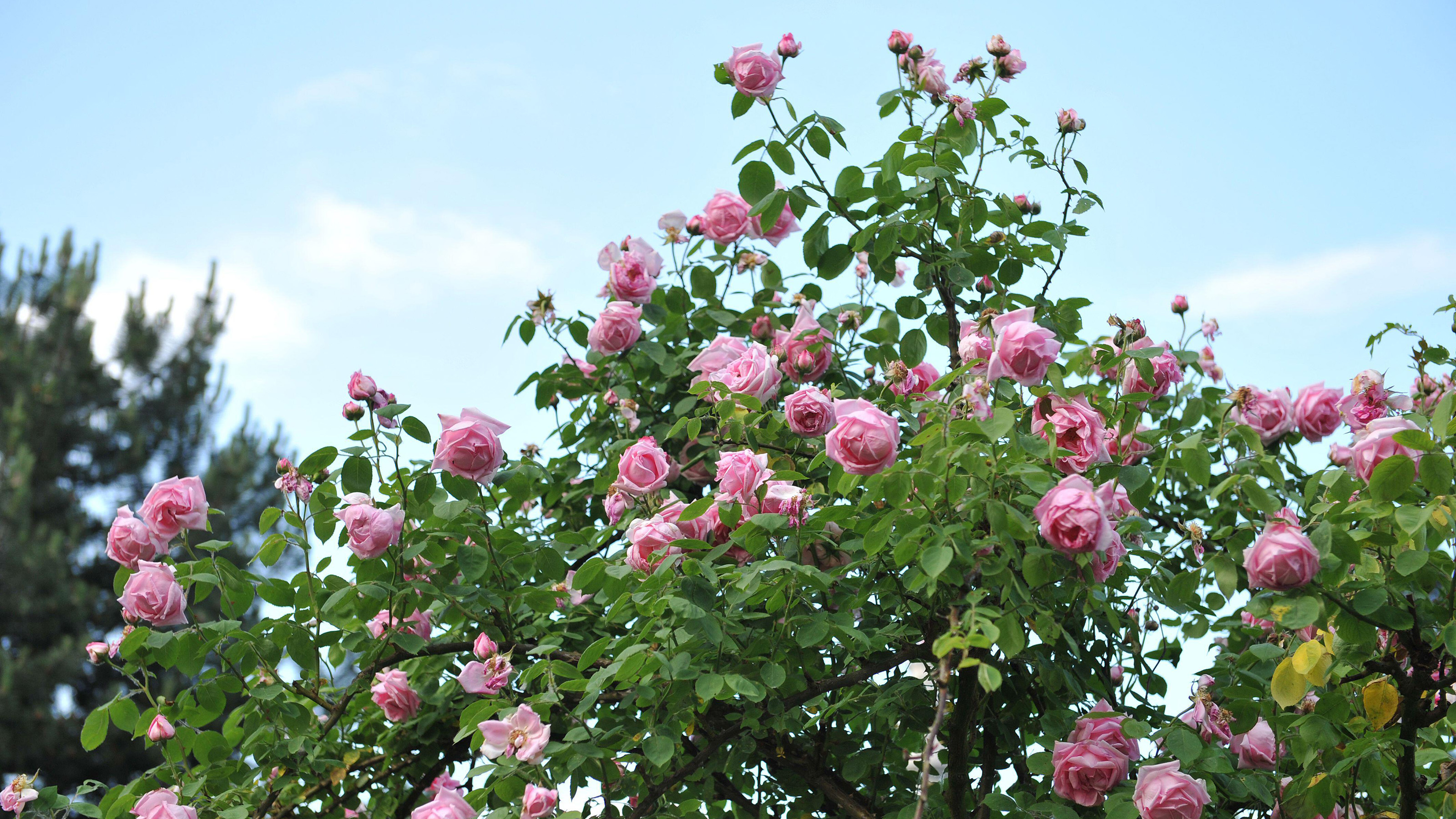
Climbing roses will give you gorgeous, buxom blooms that fill the air with beautiful scent. In the average backyard, the best way to fit in as many roses as possible is to grow them vertically.
There are climbing roses to suit every structure: thornless forms for archways, compact varieties for pillars, and vigorous cultivars to clamber along fencing. But the traditional place to train one is up the front of the house – a rose is one of the few climbing plants that has the elegance to clad a facade, and it is easier to manage than a wisteria.
‘The important characteristic to consider when selecting a rose for the house is how high you are willing to go up a ladder to train, prune, and deadhead it,’ says leading rose expert and international rose-garden designer Michael Marriott.
‘I usually say up to the middle of the bedroom windows maximum. So it’s important not to be impatient and choose an overly vigorous variety.’
So before you start thinking about how to grow roses, measure the height you want your climbing rose to reach and buy a variety that matches it.
Coat your walls and pergolas with climbing roses
Very vigorous roses can be used to coat boundary walls or a large pergola. Select the best climbing roses for each structure and prune them once a year, and they will repay you with more flowers than a shrub rose could ever produce, filling the summer air with sublime scent.
How to plant climbing roses
- If you're planning to plant bare root roses, soak the rose’s roots in a bucket of water for an hour before planting.
- Dig a hole that is wider and deeper than the plant’s roots. Loosen the soil at the bottom of the hole with a fork, and mix in friable manure or compost.
- Aid root growth by scattering mycorrhizal fungi for roses from Amazon onto the roots while holding the rose over the hole. If planting a containerized rose, simply sprinkle the fungi into the hole.
- Check the graft (the bulbous join between the roots and the stems) is around 2in (5cm) below the surface, before backfilling the hole with soil.
- Firm in the rose by gently pressing down with your palms or feet, in order to prevent air pockets. Then water in, using a fine watering can rose.

When to plant climbing roses
Containerized climbing roses can be planted at any time of year, but if possible you should plant ‘bare root’ climbers between fall and spring. Bare root means the plant is sold without soil.
Not only are bare root roses cheaper, they create a healthy rose faster by better establishing a robust root system. Buy yours from a specialist rose supplier and plant on a day when the ground isn’t frozen.
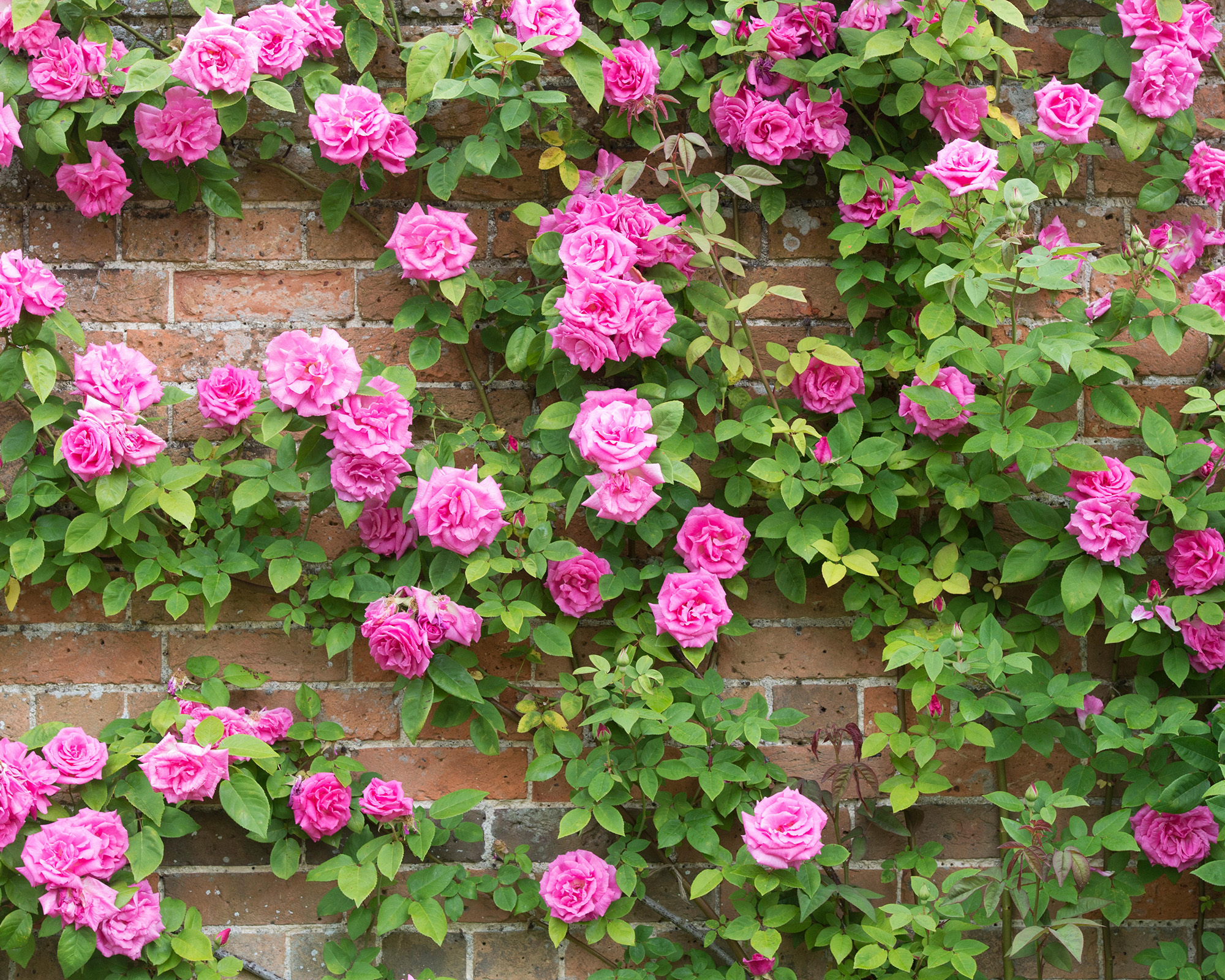
Where to plant climbing roses
Climbing roses will thrive in full sun. The vast majority of roses perform their best in the long hours of sunshine enjoyed on a south- or west-facing wall. However, there are a few roses (such as ‘Madame Alfred Carrière’) that will tolerate the scant light of a north-facing wall.
Roses like fertile, humus-rich, well-drained, moist neutral to alkaline soil. Enrich soil by digging in organic matter (such as well-rotted manure or compost) before planting. To prevent disease, choose a site that hasn’t had roses in it for a few years.
Common ideas for landscaping with roses will see climbers trained up exterior walls of your house or over a pergola and other climbing plant support ideas.

How to care for climbing roses
In winter, prune climbing roses. After pruning, give the plant a dose of rose fertilizer. Mulch with well-rotted manure or organic compost in spring, ensuring it isn’t in direct contact with the rose’s trunk. You can also learn how to take rose cuttings for propagating from soft wood cuttings in spring and summer.
In summer, essential rose care tips include feeding your climbing rose with liquid tomato fertilizer fortnightly, at half the recommended dose. Deadhead repeat-flowering climbers to stimulate the production of even more flowers.
In the fall you should tie in new main shoots in order to prevent wind damage. Rambling roses (which are not the same as climbing roses) ought to be pruned now.

Pruning advice to keep climbing roses looking good
Learning how to prune roses is an essential part of rose care. There are a few things to bear in mind for climbing rose care.
- Think safety first. Use a sturdy ladder and shoes with good grip, and never prune in wet weather. It's not worth the risk of slipping.
- Be ruthless with your clipping. Climbing roses must be pruned hard. Using a sharp pair of your best secateurs, remove dead, damaged, crossing, or diseased stems. If the plant is an overgrown tangle, remove the oldest of the main established stems, leaving the healthier ones.
- Trim the side shoots of the stems you are keeping, by two-thirds to a bud.
- Tie in the pruned established stems and new, young main stems horizontally. As well as preventing wind damage, this will stimulate a good show of flowers.
Tip: It's important to note that rambling roses are pruned differently to climbing roses.
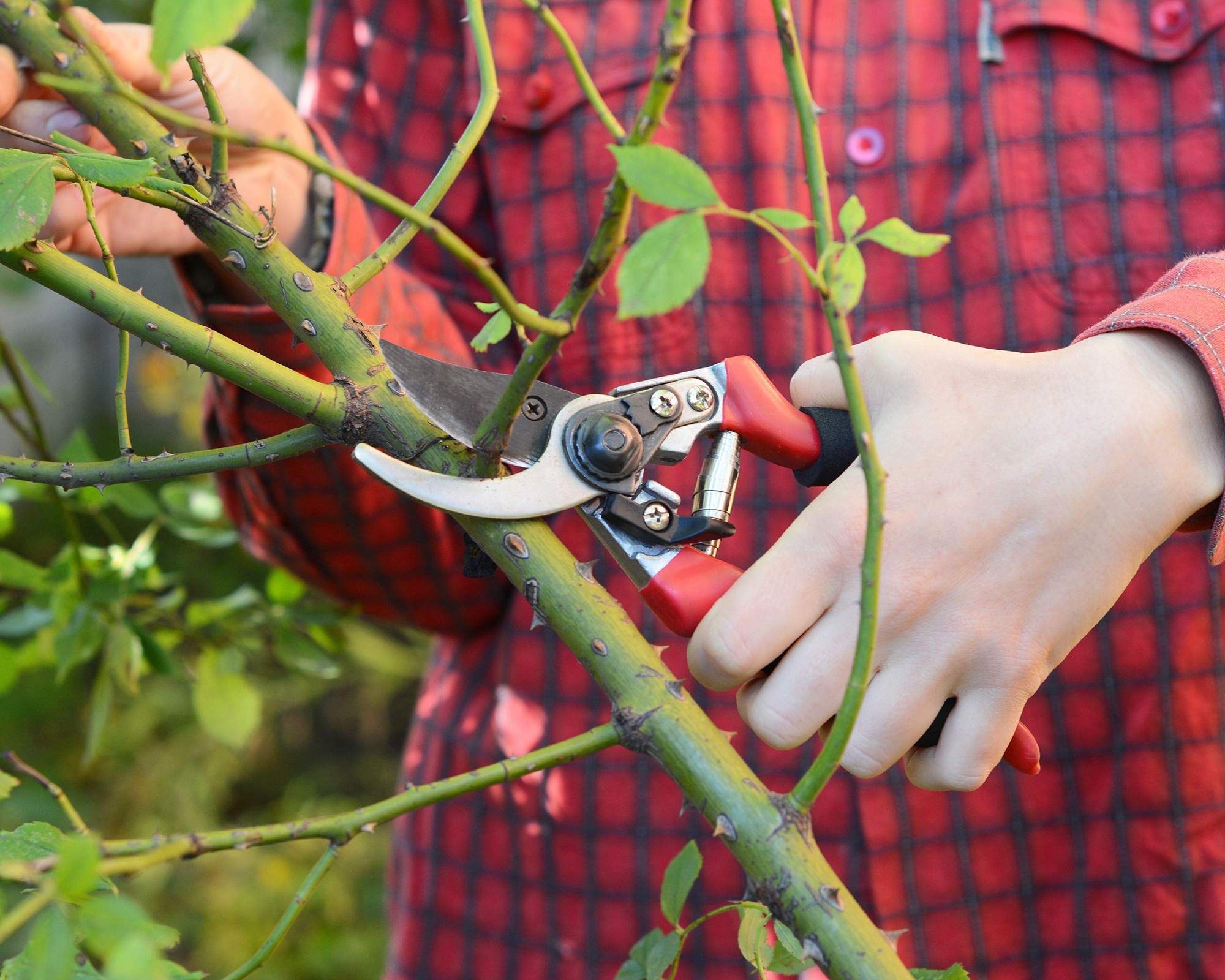
How to train a climbing rose
Build layers from the ground, rather than letting the rose shoot straight upwards, which will result in it only flowering at the top. Do this by tying in the main stems horizontally during the annual prune.
Tie your stems in carefully to create a good, open structure. Don’t allow your stems to cross over one another. This will create a tangle of shoots and stems and the lack of air flow will encourage diseases.
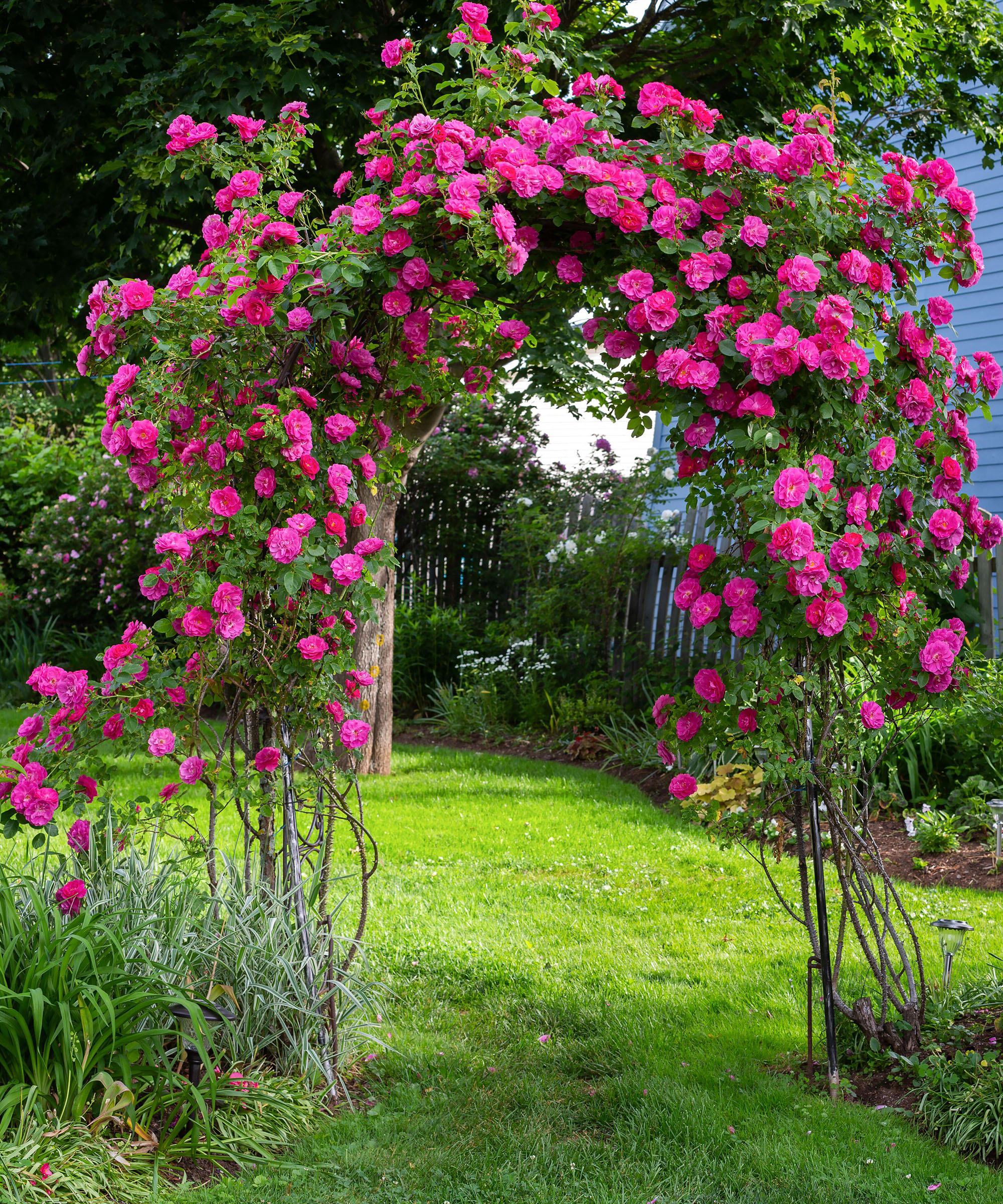
Common problems with climbing roses
Poor flowering of all types of roses as well as climbing roses may be caused by insufficient light; move the rose to a sunnier position, if possible.
A paltry show of flowers can mean that the rose has not been pruned for some time. Or, if the bloom is all at the top, resolve the problem by positioning the stems to grow horizontally.
A powdery white coating on the leaves and stems may be caused by the plant not receiving sufficient air flow, either because there isn’t enough space between the trellis and the wall or because the plant was not pruned hard enough, meaning there is a congestion of stems.
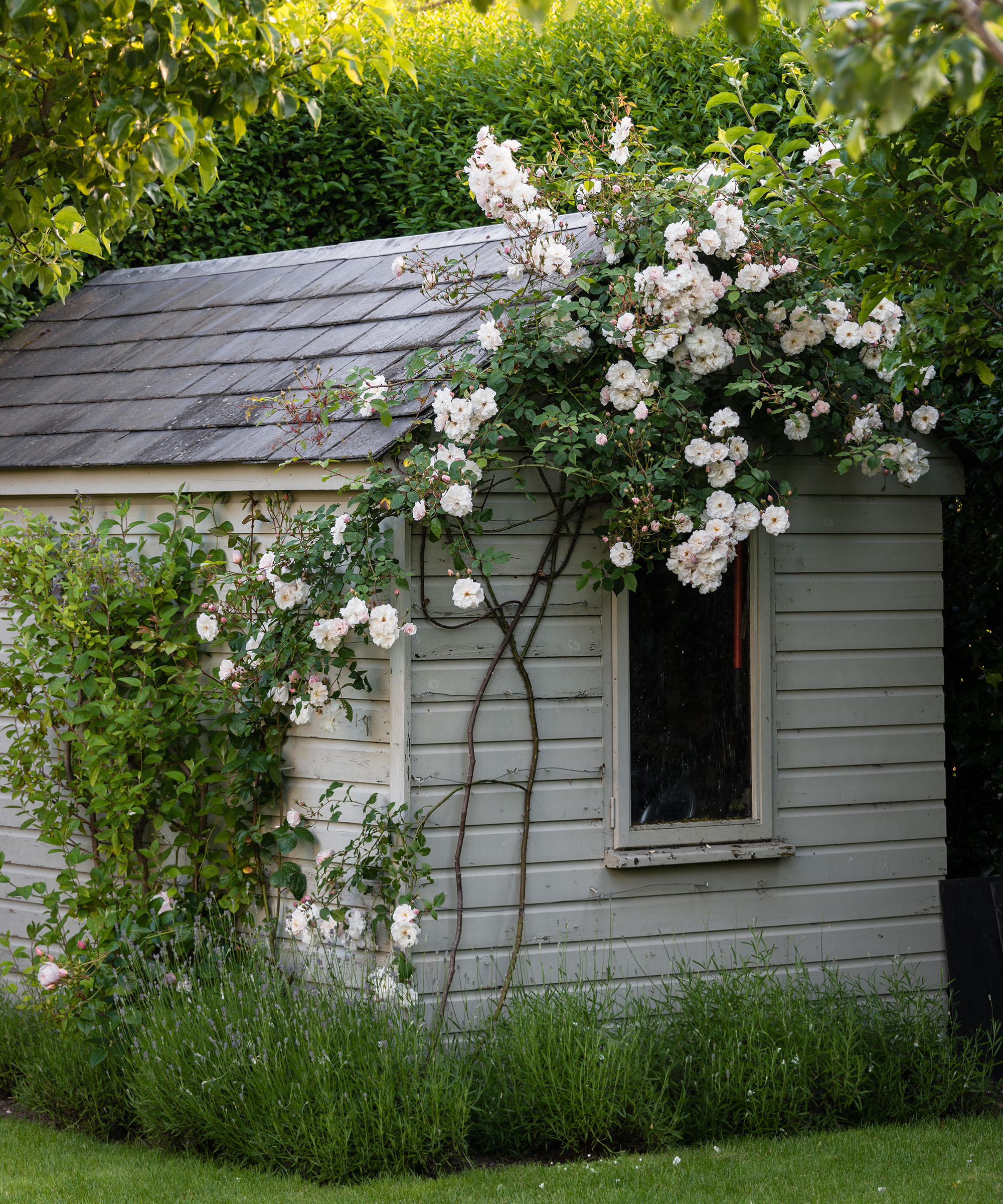
How do you support climbing roses?
Wooden trellis ideas for gardens can rot over time, so a tensioning system of wires is arguably better. Any wire system that you invest in needs to either tighten itself as the plant grows or be easy for you to tighten (via turnbuckles, for instance). A weak support system can be a nightmare years down the line if it buckles under the plant’s weight, so it’s worth getting it right before planting.


Teresa has worked as an Editor on a number of gardening magazines for three years now. So she is lucky enough to see and write about gardening across all sizes, budgets and abilities. She recently moved into her first home and the garden is a real project! Currently she is relishing planning her own design and planting schemes. What she is most passionate about when it comes to gardening are the positive effects it has on our mental health to grow and care for plants, as well as being great for the environment too and help provide food and shelter for wildlife.
